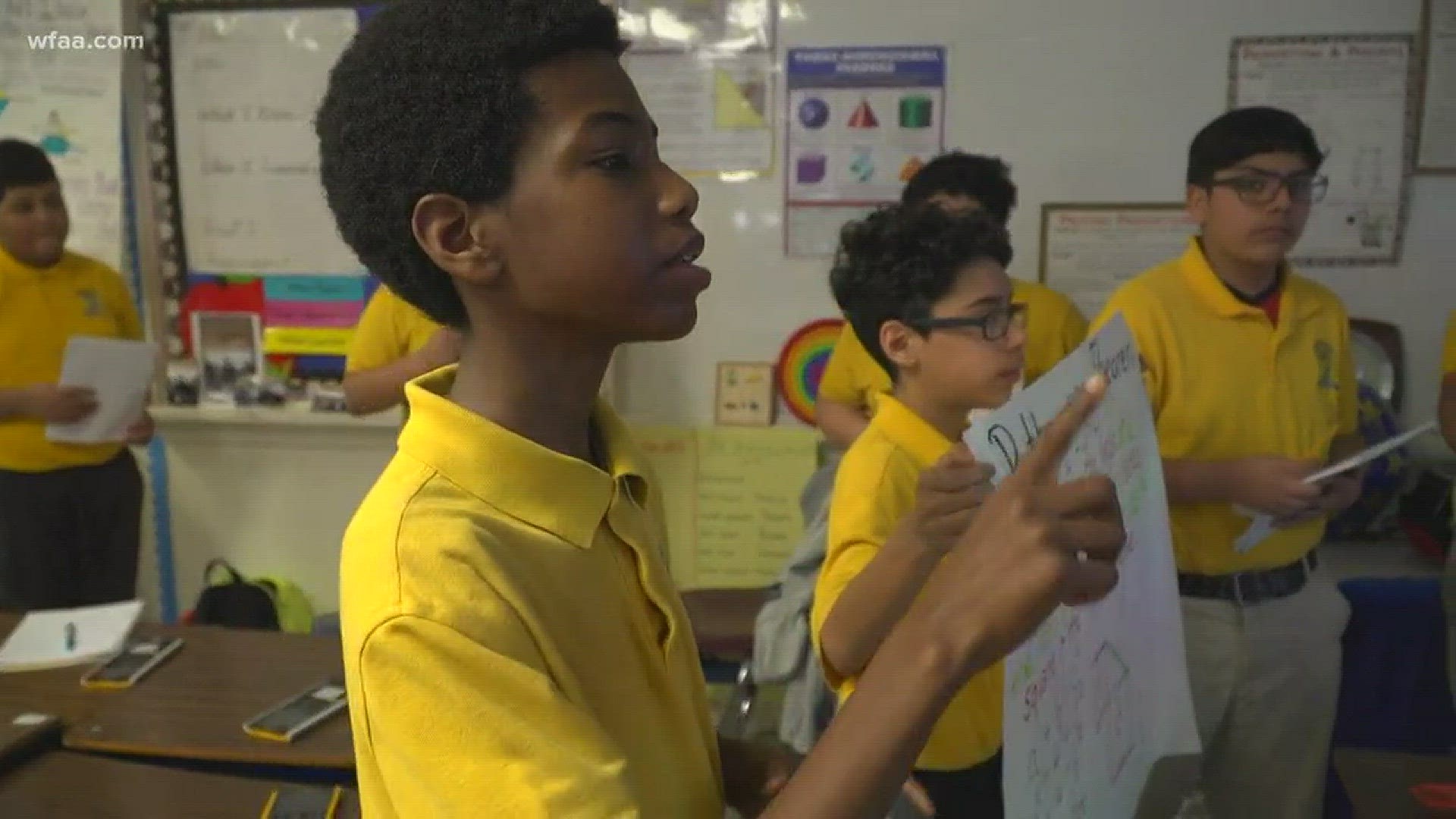DALLAS – Walking by Ms. Richardson's math class, you might do a double take as some students sit on balls rather than in chairs.
"I was one of the teachers that said 'just sit down and don't move.' But with boys you can't do that,” said Alfreta Richardson, Dallas ISD teacher. “They're lying on the floor and using calisthenics balls, but they're listening.”
Nothing about her second-floor classroom is traditional.
"The traditional teacher is a teacher that wants the student in a seat focused on her the entire class. This is 2018. We're getting away from that. It's more student-led, more student-driven," she explained.
Students rarely sit in chairs in her class. Not only do they balance on balls, but also on boards and even use pedal bikes, among other things.
Ms. Richardson calls it a brain break.
"Math can be frightening. Seventh grade is one of the hardest grades to teach," she continued.
It’s one of two interactive classrooms at the Young Men's Leadership Academy at Fred Florence Middle School in Pleasant Grove, a campus made up entirely of boys.
"We've found that our boys need movement. They need visuals. They need to touch things. Our active classrooms do just that,” said Dr. Chris Barksdale, principal. “Our students are more excited about learning because it incorporates movement and that's how boys learn best."
Last year, Dallas ISD had six classrooms like Ms. Richardson’s. This year, the district has more than 35 across the district and new ones are likely coming.
Experts agree with teachers that this new trend improves how students learn.
"Sitting still can be hard for them, so whenever they're able to move on this ball, they're able to get that energy out in a positive way, so they're able to focus more,” said Camille Jones, an occupational therapist at Baylor Institute for Rehabilitation. "Sometimes teachers might think 'Oh goodness, they're going to be bouncing around in class.' In the studies that have been done, at first they were bouncing a lot, but they still were able to focus a lot more."
Research suggests physical activity prepares the brain to learn.
Ms. Richardson believes it. After two years, her students now show sharper focus, have less disciplinary issues and increased engagement, she said.
The campus has already ordered materials for a third interactive classroom, said Kevin Malonson, Education Coordinator at the campus. With each one costing about $2,000, grants pay for the materials needed.

